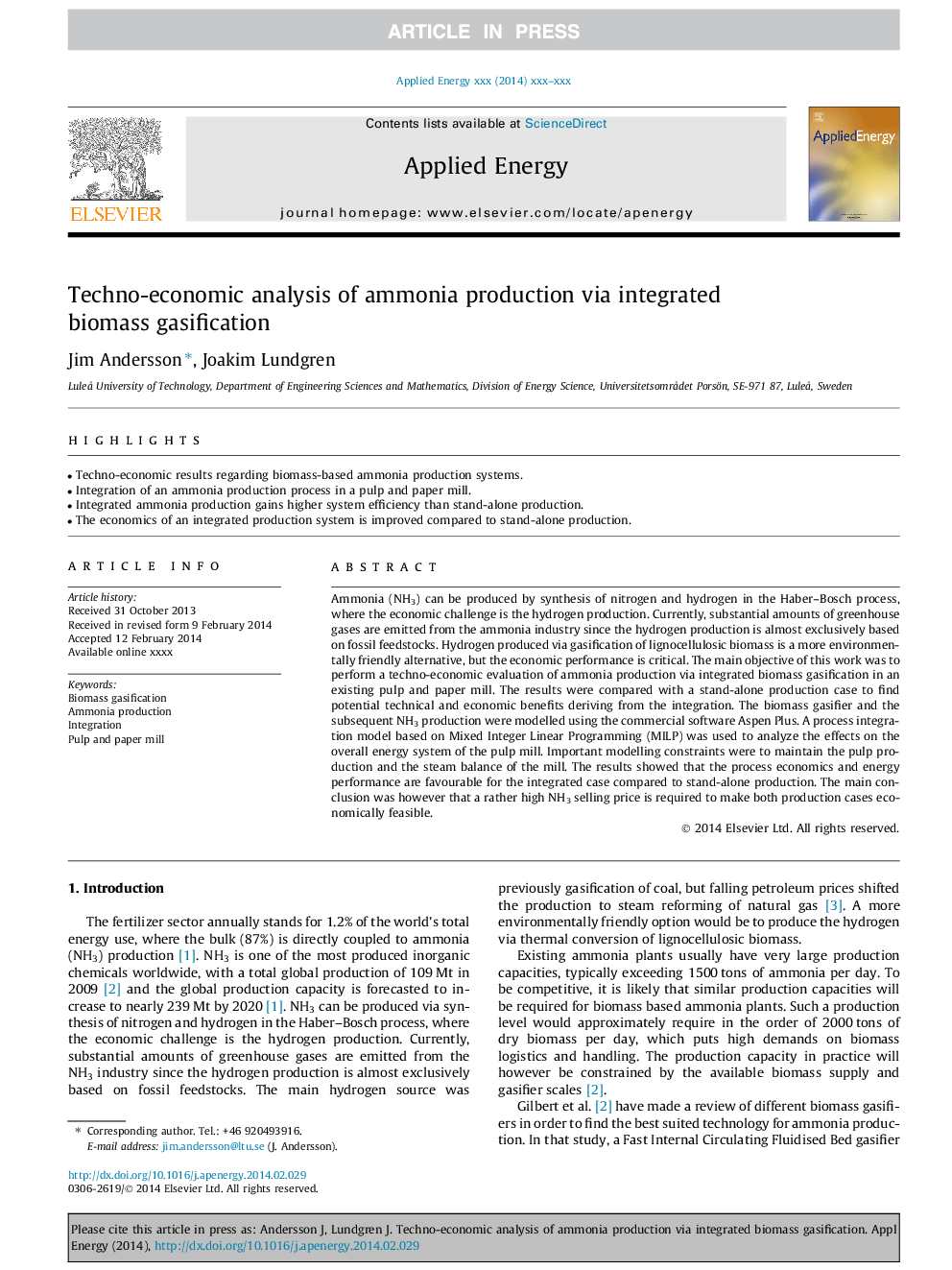| Article ID | Journal | Published Year | Pages | File Type |
|---|---|---|---|---|
| 6690126 | Applied Energy | 2014 | 7 Pages |
Abstract
Ammonia (NH3) can be produced by synthesis of nitrogen and hydrogen in the Haber-Bosch process, where the economic challenge is the hydrogen production. Currently, substantial amounts of greenhouse gases are emitted from the ammonia industry since the hydrogen production is almost exclusively based on fossil feedstocks. Hydrogen produced via gasification of lignocellulosic biomass is a more environmentally friendly alternative, but the economic performance is critical. The main objective of this work was to perform a techno-economic evaluation of ammonia production via integrated biomass gasification in an existing pulp and paper mill. The results were compared with a stand-alone production case to find potential technical and economic benefits deriving from the integration. The biomass gasifier and the subsequent NH3 production were modelled using the commercial software Aspen Plus. A process integration model based on Mixed Integer Linear Programming (MILP) was used to analyze the effects on the overall energy system of the pulp mill. Important modelling constraints were to maintain the pulp production and the steam balance of the mill. The results showed that the process economics and energy performance are favourable for the integrated case compared to stand-alone production. The main conclusion was however that a rather high NH3 selling price is required to make both production cases economically feasible.
Related Topics
Physical Sciences and Engineering
Energy
Energy Engineering and Power Technology
Authors
Jim Andersson, Joakim Lundgren,
